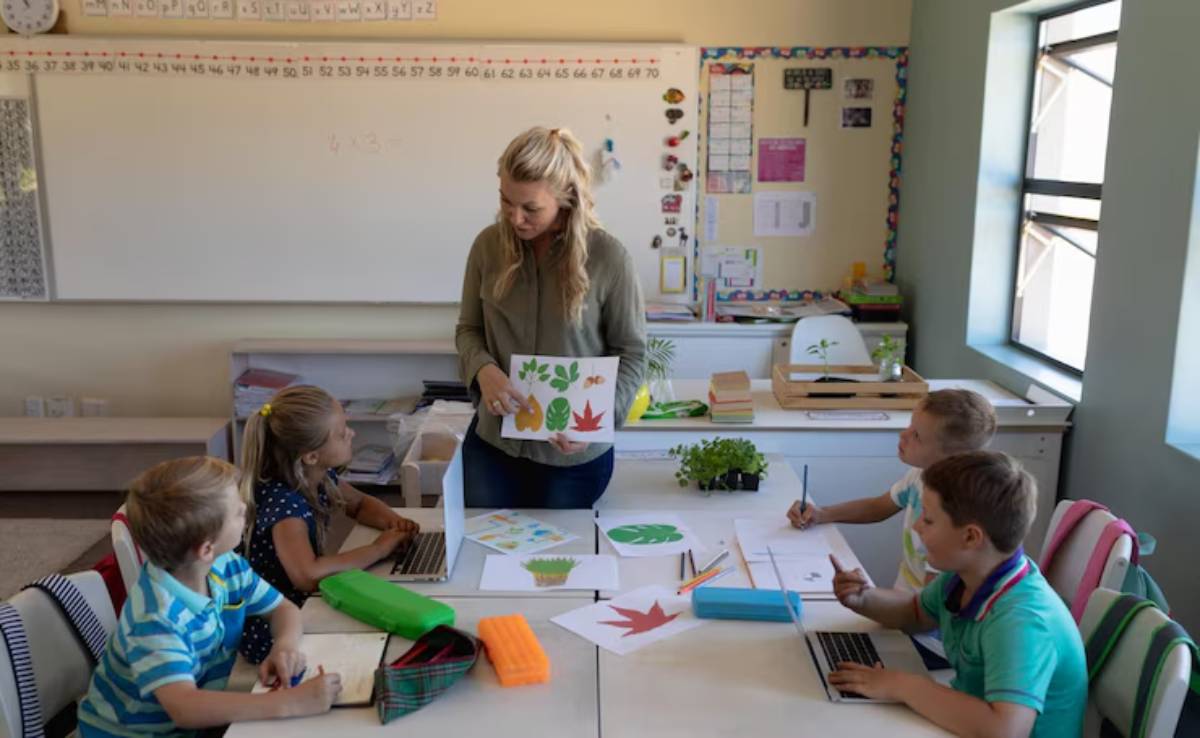The Health & Wellness Blog

Mindful Classroom Practices for Teachers: A Guide to Enhancing Teacher Wellness and Student Engagement
Mindfulness has become popular in education over the last ten years. It offers great benefits for both teachers and students. Growing demands on teachers make mindful classroom practices important. They help boost teacher wellness and engagement.
In this blog, we will cover:
- Why classroom mindfulness matters
- Simple strategies for mindful teaching
- Common misconceptions
- How to empower educators
Why Mindful Classroom Practices Matter

Mindfulness in education is not the latest fad. It is a powerful tool that has the potential to change lives for educators as well as students. Mindfulness practices in classrooms can help students feel calm and focused. This also improves emotional regulation. As a result, students may see better academic performance and overall well-being. Mindfulness in teaching boosts teacher wellness. It reduces stress, prevents burnout, and supports a healthy work-life balance.
Real-Life Applications of Mindful Classroom Practices
Think of a classroom that starts the day with a few minutes of guided exercises in mindfulness. Students are encouraged to tune into their breath, anchoring themselves in the current moment. This activity helps create a focused learning space for the day. In this setting, students pay more attention and are less distracted. Also, teachers who practice mindfulness feel less stressed. They enjoy teaching more, which boosts their productivity.
Data-Backed Insights on Mindfulness in Education
There is research to support the value of mindfulness in education. The University of Cambridge did a study. It found that students in mindfulness programs had better attention and emotional regulation. They also showed fewer symptoms of anxiety and depression. Mindfulness practices help lower stress and boost job satisfaction for teachers. They also create time in the school day for these activities.
Key Benefits of Mindful Teaching
Mindful teaching goes beyond simply incorporating mindfulness exercises into the classroom. It involves a holistic approach to education that prioritises the well-being of both teachers and students. Here are some key benefits of mindful teaching:
Enhanced Teacher Wellness
Teacher wellness and well-being are pillars of educational effectiveness. Mindful teaching helps teachers support their mental and emotional health. This approach can reduce burnout and promote a positive work-life balance. Mindfulness practices help teachers stay present. This promotes calm and resilience, making it easier to handle their job’s demands.
Improved Student Engagement

A class that practices mindfulness helps students focus better. This boost in attention leads to more engagement. Students who are present in the moment speak more in class. They are also more likely to remember what they learn and develop a better understanding of the subject. Mindfulness in the classroom also contributes to creating a supportive learning environment.
Emotional Regulation and Stress Reduction
Mindfulness practices help teachers and students manage stress and control their emotions. Teachers can help students manage tough times. They can use deep breathing, meditation, and mindful reflection. This emotional self-control helps the classroom environment and, ultimately, the school culture.
Additional Expert Tips for Effective Mindful Classroom Practices
Implementing mindful classroom practices requires intentionality and consistency. Here are some expert tips to help teachers integrate mindfulness into their daily routines:
Start Small and Build Consistency
Start with brief mindfulness exercises. As students get more comfortable, slowly increase the duration. Be consistent by adding mindfulness to your daily routine. Start and end your day with a short mindfulness session.
Create a Mindful Classroom Environment
Create a classroom that encourages mindfulness. Use calming features like soft lighting and soothing colours. Arrange comfortable seating for relaxation. Encourage students to personalise their space with items that bring them peace and joy.
Encourage Mindful Communication
Promote mindful communication by encouraging active listening and empathy among students. Encourage open talks and reflection. Let students share their thoughts and feelings in a supportive, non-judgmental space.
Incorporate Mindfulness into Lesson Plans
Integrate mindfulness into lesson plans by incorporating activities that encourage self-reflection and introspection. Assign journaling exercises. These should help students reflect on their feelings, thoughts, and experiences.
Common Mistakes to Avoid in Mindful Teaching
Mindful teaching has clear benefits. Be aware of common pitfalls that can limit its effectiveness. Here are some mistakes to avoid:
Overemphasis on Technique
Mindfulness techniques are helpful. We must prioritise the well-being of students and teachers. Don’t just focus on techniques. Also, think about emotional and mental health.
Lack of Personal Practice
Teachers should practice mindfulness personally if they use it in their classrooms. Leading by example shows how important mindfulness is. It inspires students to fully embrace the practice.
Inconsistent Implementation
Implementing mindfulness practices inconsistently can undermine their effectiveness. Be consistent. Add mindfulness to your daily routine. Practice it regularly to reinforce its importance.
Advanced Insights and Expert Recommendations
If you’re an educator wanting to enhance your mindful teaching skills, check out these insights and tips:
Embrace Mindfulness as a Lifestyle
Mindfulness is more than a classroom practice; it is a way of life. Encourage teachers and students to practice mindfulness outside the classroom. They can include it in their daily routines and interactions.
Collaborate with Colleagues
Build a mindful culture in the school by working with colleagues. Share ideas, strategies, and experiences together. Working together builds a network that boosts the effectiveness of mindful teaching.
Continuous Professional Development
Keep growing in your career to learn about the latest research and best practices in mindfulness education. Attend workshops, conferences, and training sessions to enhance your knowledge and skills.
Conclusion: Cultivating a Mindful Classroom for Lasting Impact

Mindful classroom practices boost teacher wellness and student engagement. Educators can build a supportive learning space by focusing on mindfulness. This approach helps students develop emotional control, improve focus, and build resilience. Mindful teaching helps create a positive school culture. When teachers embrace this philosophy, students thrive and grow.
Integrating mindfulness in the classroom isn’t just about a set solution. It’s a journey of exploration and discovery. Educators can shape children and build their confidence. This helps instil a gracious attitude for their future.
Are you ready to embark on this transformative journey towards mindful teaching? Start today by adding small mindfulness practices to your classroom. You’ll see how much it can benefit both you and your students.









